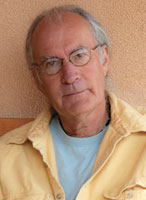Picking The Right Lens
Point of view is determined by many factors, and is one of the most important aspects of making photos that define who you are and how you see. It can be where you stand, whether you are photographing from your normal height or elevating above the subject or shooting from kneeling position, the direction of light from your shooting position, and, perhaps most important, how much of the scene before you is encompassed by the lens on your camera. Picking the right lens—that is, the lens that defines your point of view—is one of the most important decisions you can make in your photography.
 |
|
|
For those who have cameras lacking built-in VR (Vibration Reduction), a VR or image stabilized lens can allow for longer shutter speeds than you could manage shooting handheld. This really comes into play in dim lighting conditions, and that light pickup can be “spent” on aperture and/or shutter speed settings. Having worked with numerous such lenses I can attest to their capabilities, which really come in handy when working with teles and long-range zooms handheld.
You should also check whether the lens is made exclusively for smaller sensors or if it will handle both “full frame” and APS-C or Four Thirds coverage. Manufacturers have various codes for describing the sensor size coverage. Using a lens thus designated on a full-frame camera will result in serious vignetting. True, some full-frame sensor cameras have a Crop mode that allows for use of such lenses, but this cuts down on the resolution (megapixels utilized) and to me seems a waste of image information. And when using any lens on an APS-C or Four Thirds sensor camera always take the notorious “multiplication factor” into consideration, which usually means you will not get the wide angle of view a shorter focal length seems to imply.
But for me the most important attribute is the focal length of the lens. I happen to be a fan of wide-angle lenses, and have always found them ideal for the way I see, compose, and work. Landscapes, city scenes, and nature work all seem better when I can utilize the wide field of view and often astounding depth of field these lenses offer. Indeed, given the choice of one focal length on the proverbial desert island a 24mm would be it. Are they best for portraits and wildlife and some scenic work? No, and that’s when teles and even macro lenses come into play.
Luckily, we are not limited to one lens in our kit bag, and the quality of wide to tele zooms has improved exponentially in recent years. The trick is to think long and hard about which focal length, and other attributes, best serve your personal point of view. You might not think that the lens on your camera changes the way you see and under what conditions you can work, but the influence of the “eye” through which you view the world is profound.

- Log in or register to post comments

































